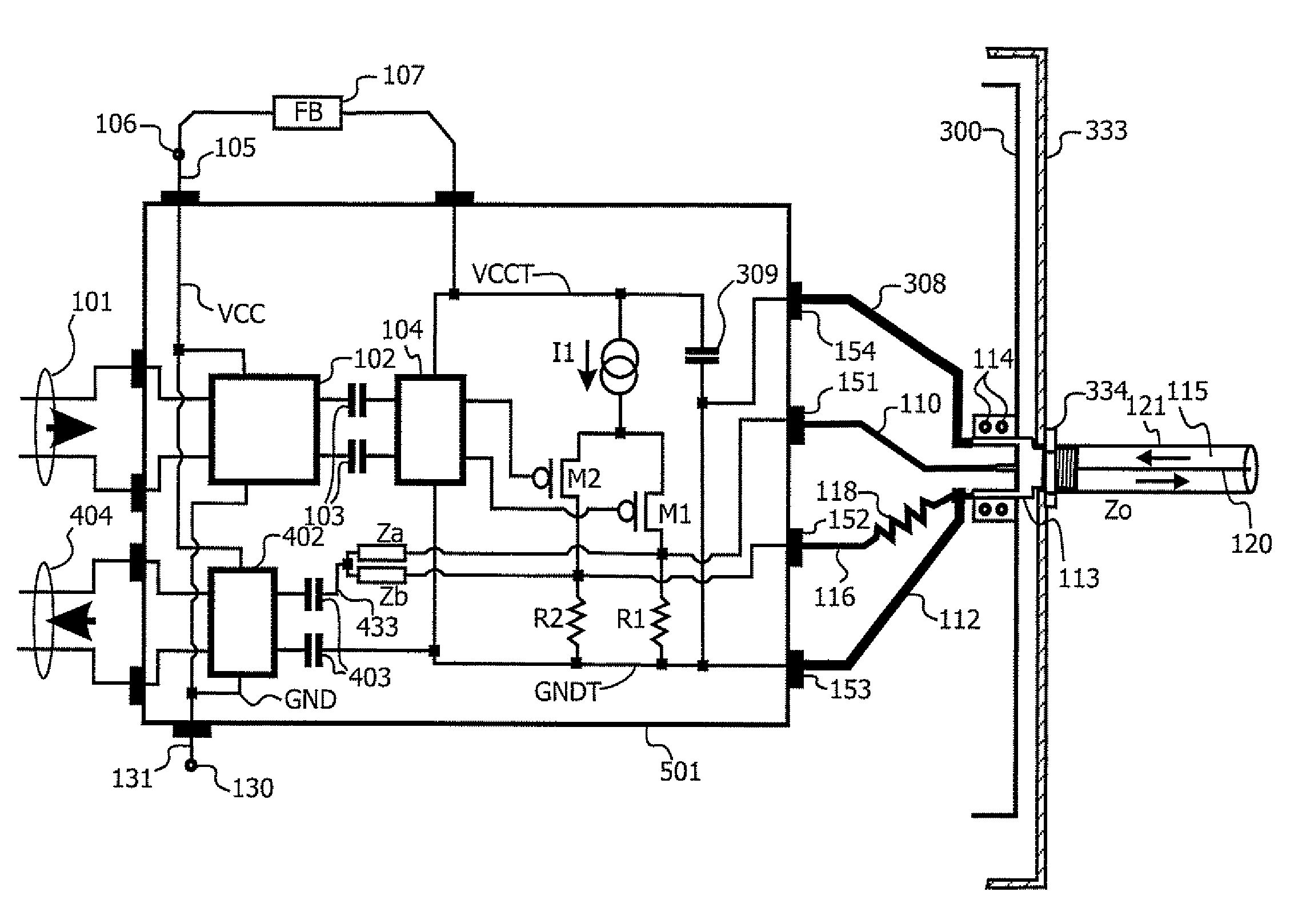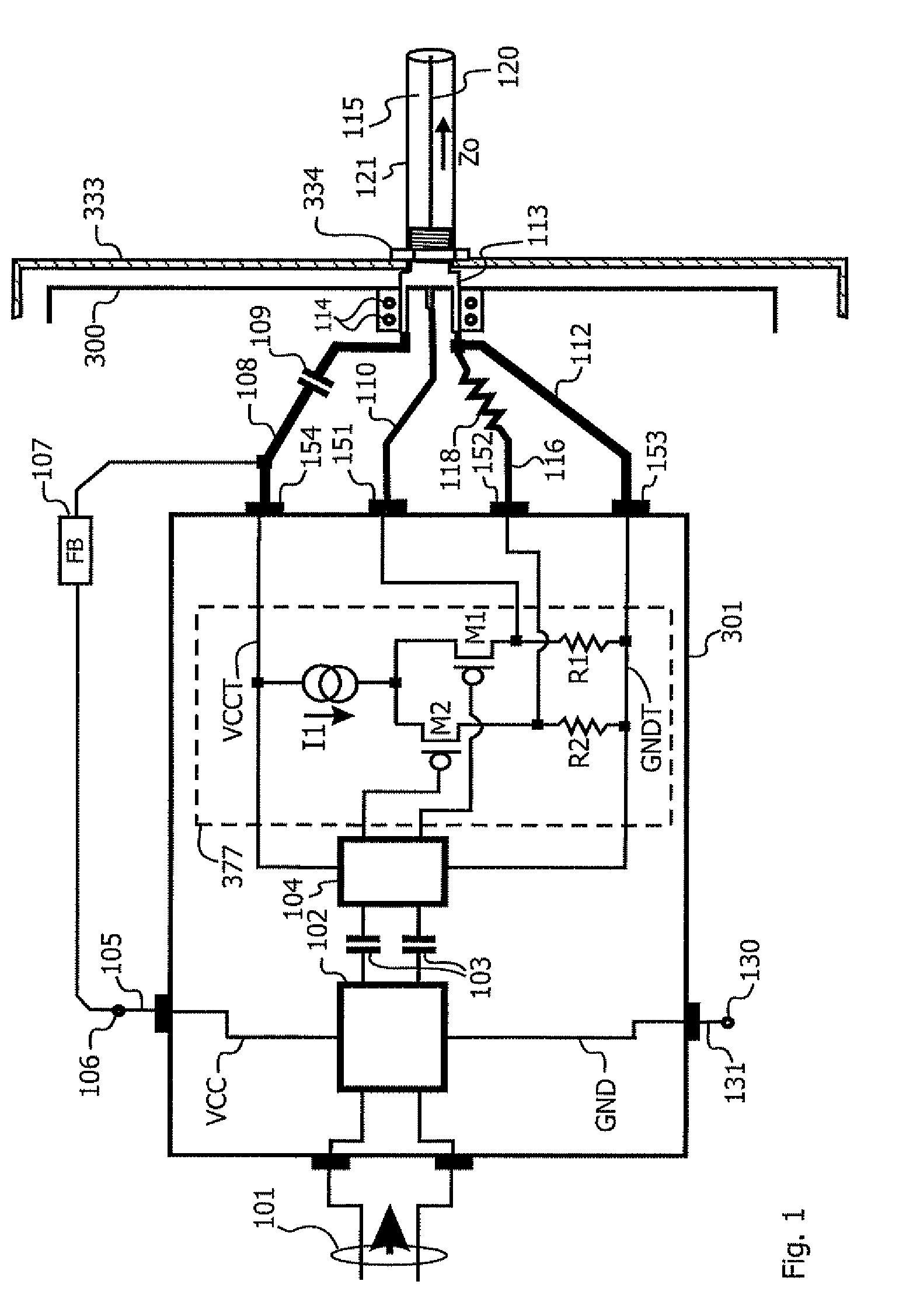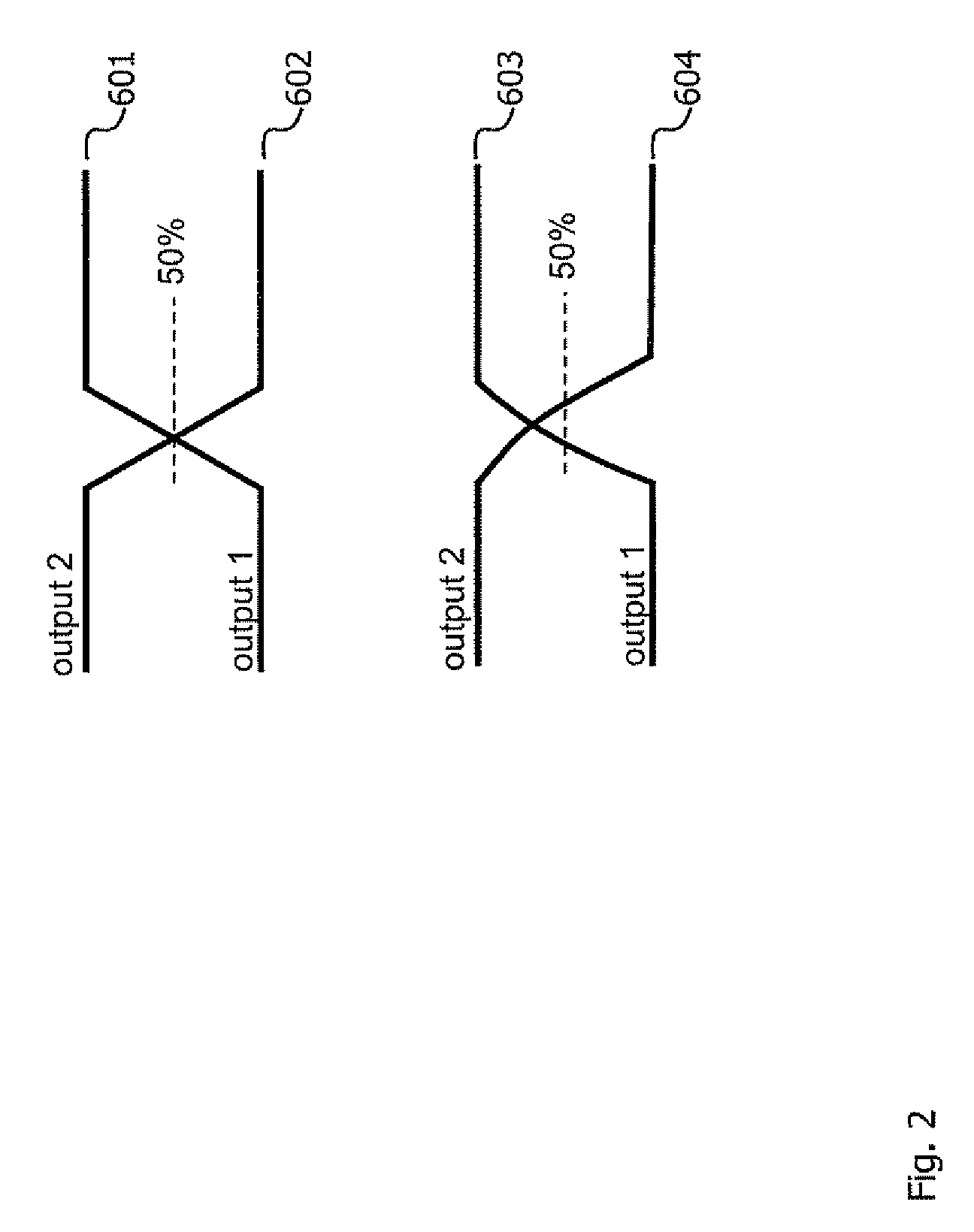Transceiver for single ended communication with low EMI
a transceiver and low emi technology, applied in the field of launch signals, can solve the problems of differential cable skew, high cost of differential cable and connector, and wave coupling in the cable between differential and common mode, so as to reduce the emi radiation and effectively cancel the common mode component
- Summary
- Abstract
- Description
- Claims
- Application Information
AI Technical Summary
Benefits of technology
Problems solved by technology
Method used
Image
Examples
second embodiment
[0057]The same principle, though with just a little different implementation according to the present invention is presented in FIG. 3. The decoupling capacitor 309 is now inside the transmitter chip 401, and the inverse of the common mode signal is transmitted out of the transmitter chip 401 through transmit ground GNDT only, in FIG. 3, through first wire 112. In this case all of the inverse common mode current will flow through the first wire 112 towards the shield pin of the coax connector 113.
[0058]It is also possible with the implementation of FIG. 3 (however, not illustrated), like in the implementation of FIG. 4, that a second wire 308 carries part of the inverse common mode signal towards the coax connector's shield pin.
[0059]When the pins of first wire 308, second wire 112, first transmission line 110, and second transmission line 116 are close to each other, like in surface mount technology packages such as e.g. QFN packages, it is suggested to keep the system symmetric fo...
third embodiment
[0062]FIG. 4 shows an implementation according to the present invention that can emit and receive signals over the one attached coaxial cable 115 in full duplex mode, and that shows good immunity to bulk current injection. In this way a bidirectional splitter is obtained with good EMI properties.
[0063]With regard to the emission of the signal, i.e. driving the coaxial cable 115, this is as explained before, and only briefly set out here again. A differential signal 101 is received by a first receiver 102, which receives and terminates the incoming differential signal 101, and preconditions it before transmitting it to a pre-driver 104, through feed-through capacitors 103. The pre-driver 104 drives an output driver stage, for example the gates of output driving transistors M1 and M2 of an output driver stage. The output of the output driving stage, for example the drain voltages of the output driving transistors M1 and M2 are going off-chip, through first and second transmission line...
PUM
 Login to View More
Login to View More Abstract
Description
Claims
Application Information
 Login to View More
Login to View More - R&D
- Intellectual Property
- Life Sciences
- Materials
- Tech Scout
- Unparalleled Data Quality
- Higher Quality Content
- 60% Fewer Hallucinations
Browse by: Latest US Patents, China's latest patents, Technical Efficacy Thesaurus, Application Domain, Technology Topic, Popular Technical Reports.
© 2025 PatSnap. All rights reserved.Legal|Privacy policy|Modern Slavery Act Transparency Statement|Sitemap|About US| Contact US: help@patsnap.com



